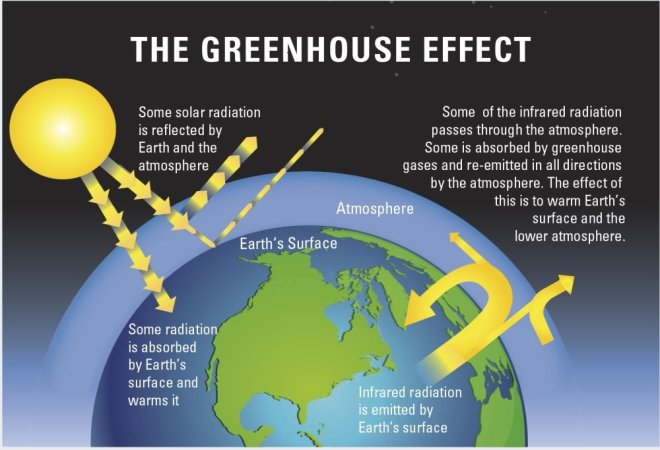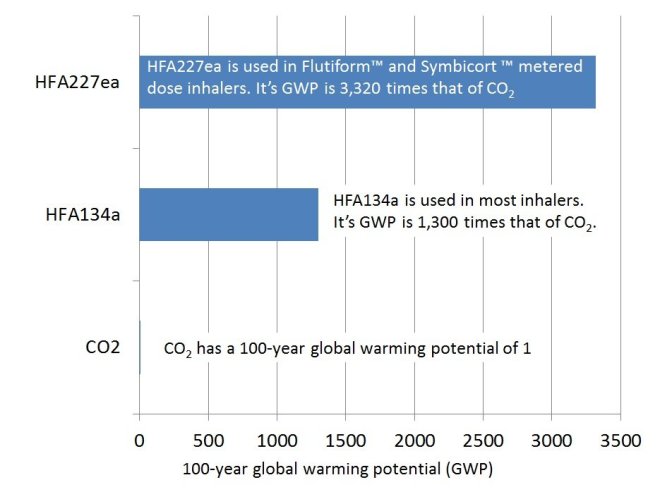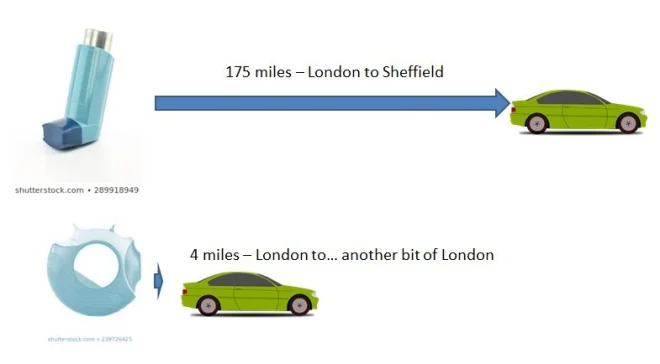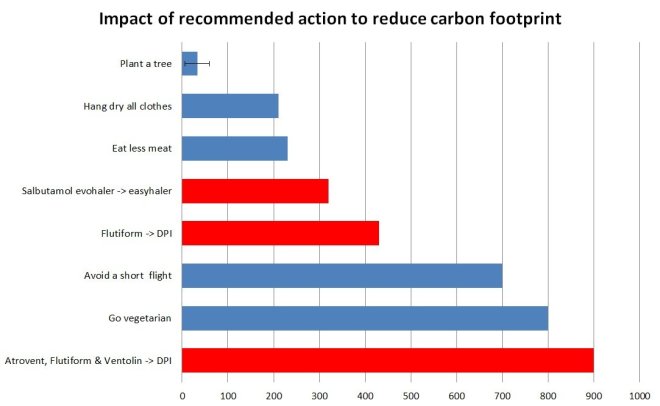What has climate change got to do with inhalers?
Many people are surprised to learn what a big contribution inhalers make to their carbon footprint. The most commonly used inhalers in the UK are called Metered Dose Inhalers (MDIs). These typically have a metal canister which you push down into a plastic case to release a puff of medicine into your lungs while you breathe in.

Their main ingredient is a hydrofluorocarbon gas, which helps deliver the medicine into your lungs. Hydrofluorocarbons (HFCs) are powerful greenhouse gases – thousands of times more potent than carbon dioxide.

We used to use Chlorofluorocarbons (CFCs) in metered dose inhalers. These were banned after we realised what a big impact they were having on the ozone layer. CFCs are also potent greenhouse gases, and climate change would be far worse today if we hadn’t acted promptly when we did to ban their use. HFCs don’t damage the ozone layer, but they are powerful greenhouse gases, far more powerful than carbon dioxide which is the most abundant and important greenhouse gas.

Your inhaler can have a big impact on your carbon footprint. The most commonly used inhaler in the UK, Ventolin Evohaler™ has a carbon footprint of 28kg per inhaler. That’s the same carbon footprint as the tailpipe greenhouse gas emissions of driving 175miles (or from London to Sheffield) in a small car. One reason its really important to take regular effective preventer or maintenance inhalers is to reduce the amount of Ventolin that you need.
Dry powder inhalers on the other hand typically have a carbon footprint of less than 1kg.

Changing the type of inhalers you use, could reduce your carbon footprint as much as becoming vegetarian.
 Greenhouse gas impact of various recommended actions (based on mean values from Wynes and Nicolas 2017 Envriron. Res. Let. 12 091001) compared to some inhaler switches. Assumes one of each inhaler used monthly. DPI=Dry Powder Inhaler.
Greenhouse gas impact of various recommended actions (based on mean values from Wynes and Nicolas 2017 Envriron. Res. Let. 12 091001) compared to some inhaler switches. Assumes one of each inhaler used monthly. DPI=Dry Powder Inhaler.
What exactly is the carbon footprint of my inhaler?
We now have accurate, published information on many inhalers. Some inhalers (Flutiform™ and Symbicort™ metered dose inhaler*) use a particularly damaging hydrofluorocarbon (HFA227 rather than HFA134) which gives them a far greater carbon footprint.
Dry powder inhalers have a far smaller carbon footprint, less than one kilo in all published studies and less than 200g per month in refillable DPIs.